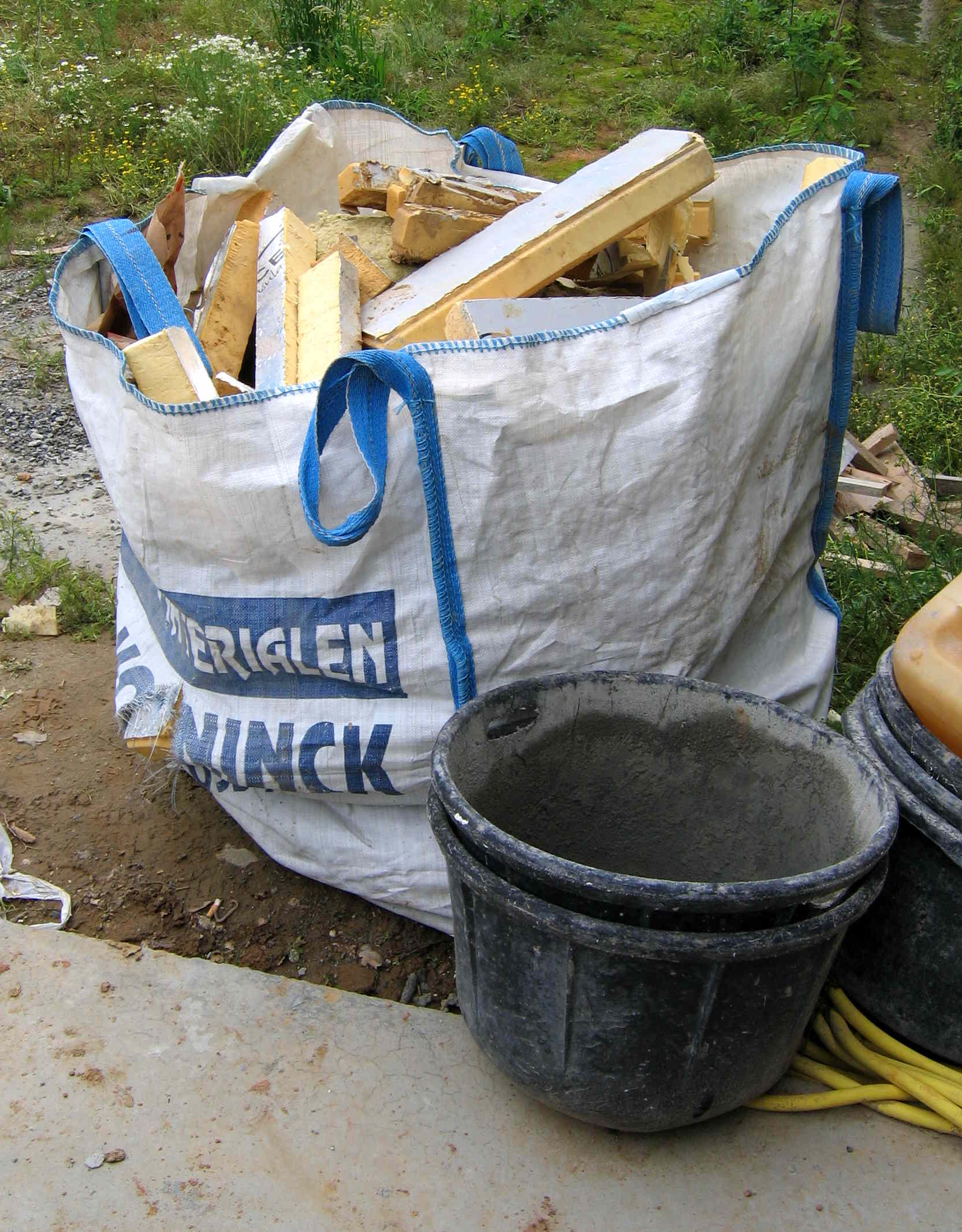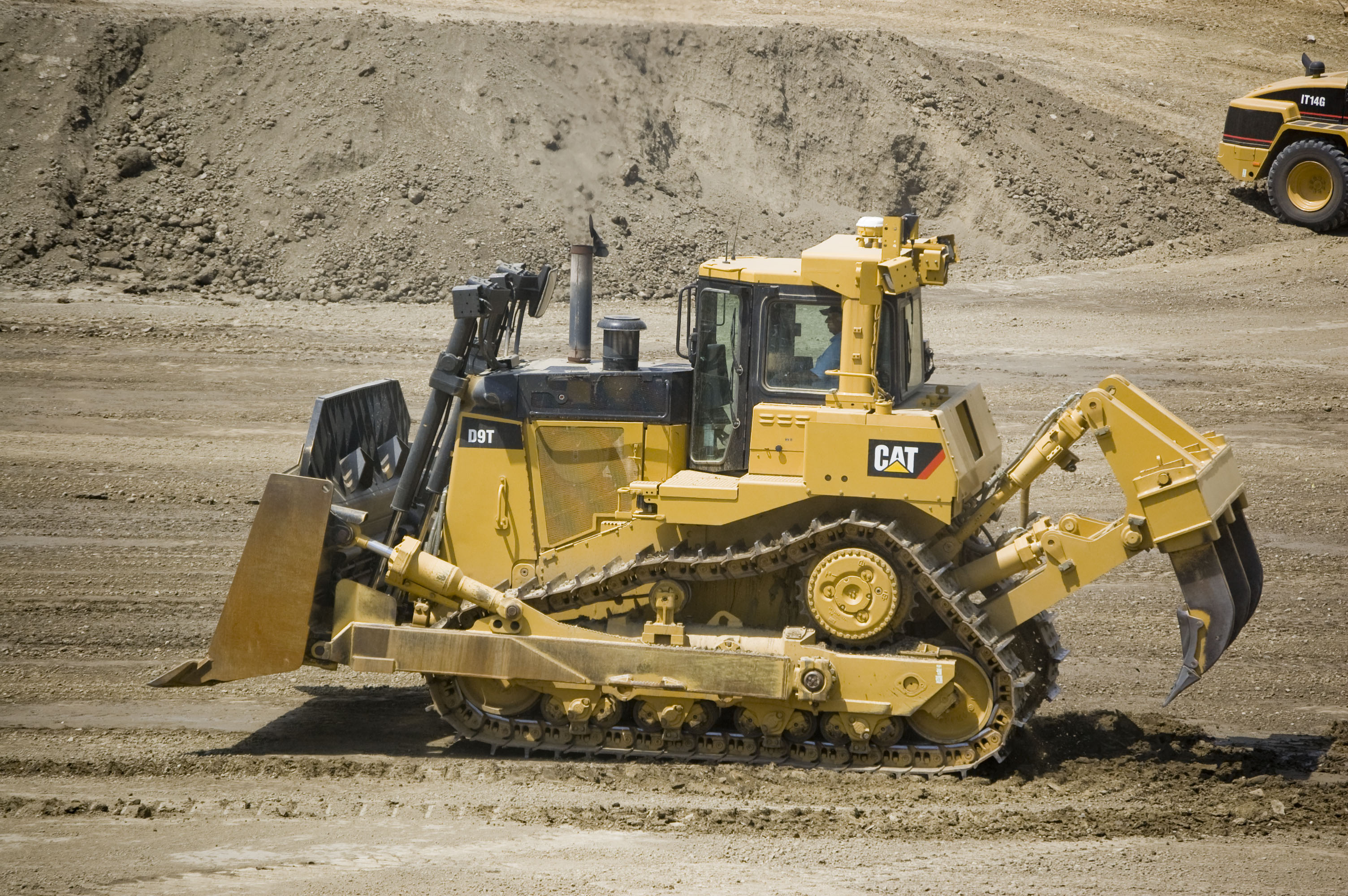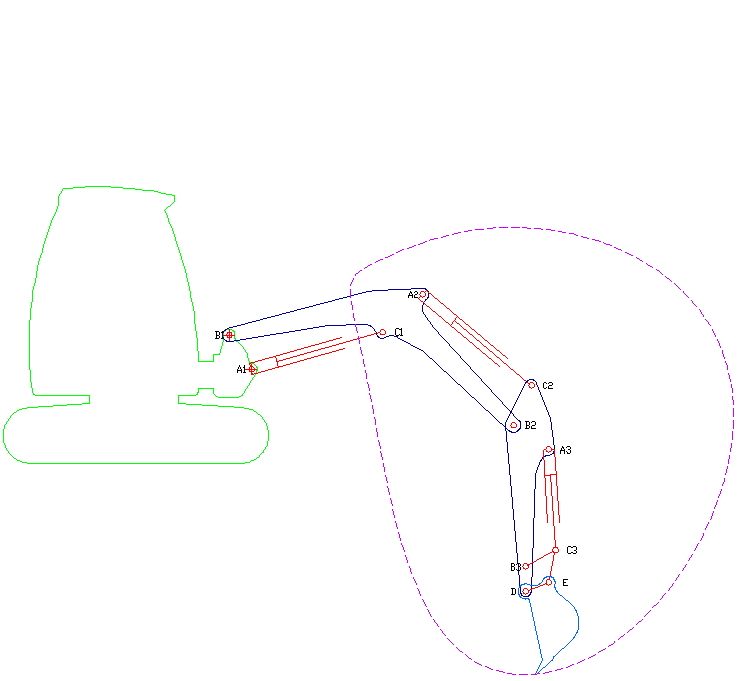|
Wheel Loader
A loader is a heavy equipment machine used in construction to move or load materials such as soil, rock, sand, demolition debris, etc. into or onto another type of machinery (such as a dump truck, conveyor belt, feed-hopper, or railroad car). There are many types of loader, which, depending on design and application, are variously called a bucket loader, front loader, front-end loader, payloader, high lift, scoop, shovel, skip loader, wheel loader, or skid-steer. Description A loader is a type of tractor, usually wheeled, sometimes on tracks, that has a front-mounted wide bucket connected to the end of two booms (arms) to scoop up loose material from the ground, such as dirt, sand or gravel, and move it from one place to another without pushing the material across the ground. A loader is commonly used to move a stockpiled material from ground level and deposit it into an awaiting dump truck or into an open trench excavation. The loader assembly may be a removable attac ... [...More Info...] [...Related Items...] OR: [Wikipedia] [Google] [Baidu] |
Tractor Loader Anim
A tractor is an engineering vehicle specifically designed to deliver a high tractive effort (or torque) at slow speeds, for the purposes of hauling a trailer or machinery such as that used in agriculture, mining or construction. Most commonly, the term is used to describe a farm vehicle that provides the power and traction to mechanize agricultural tasks, especially (and originally) tillage, and now many more. Agricultural implements may be towed behind or mounted on the tractor, and the tractor may also provide a source of power if the implement is mechanised. Etymology The word ''tractor'' was taken from Latin, being the agent noun of ''trahere'' "to pull". The first recorded use of the word meaning "an engine or vehicle for pulling wagons or plows" occurred in 1896, from the earlier term " traction motor" (1859). National variations In the UK, Ireland, Australia, India, Spain, Argentina, Slovenia, Serbia, Croatia, the Netherlands, and Germany, the word "tractor" us ... [...More Info...] [...Related Items...] OR: [Wikipedia] [Google] [Baidu] |
Backhoe
A backhoe—also called rear actor or back actor—is a type of excavating equipment, or digger, consisting of a digging bucket on the end of a two-part articulated arm. It is typically mounted on the back of a tractor or front loader, the latter forming a "backhoe loader" (a US term, but known as a "JCB" in Ireland and the UK). The section of the arm closest to the vehicle is known as the boom, while the section that carries the bucket is known as the dipper (or dipper-stick), both terms derived from steam shovels. The boom is generally attached to the vehicle through a pivot known as the king-post, which allows the arm to pivot left and right, usually through a total of 180 to 200 degrees. Description The term "backhoe" refers to the action of the bucket, not its location on the vehicle. That is, a backhoe digs by drawing earth backwards, rather than lifting it with a forward motion like a person shovelling, a steam shovel, or a bulldozer. The buckets on some backhoes m ... [...More Info...] [...Related Items...] OR: [Wikipedia] [Google] [Baidu] |
Pavement (material)
A road surface (British English), or pavement (American English), is the durable surface material laid down on an area intended to sustain vehicular or foot traffic, such as a road A road is a linear way for the conveyance of traffic that mostly has an improved surface for use by vehicles (motorized and non-motorized) and pedestrians. Unlike streets, the main function of roads is transportation. There are many types of ... or walkway. In the past, gravel road surfaces, hoggin, cobblestone and sett (paving), granite setts were extensively used, but these have mostly been replaced by asphalt or concrete laid on a compacted base course. Asphalt mixtures have been used in pavement construction since the beginning of the 20th century and are of two types: metalled (hard-surfaced) and unmetalled roads. Metalled roadways are made to sustain vehicular load and so are usually made on frequently used roads. Unmetalled roads, also known as gravel roads, are rough and can sustai ... [...More Info...] [...Related Items...] OR: [Wikipedia] [Google] [Baidu] |
Construction Waste
Construction waste or debris is any kind of debris from the construction process. Different government agencies have clear definitions. For example, the United States Environmental Protection Agency EPA defines construction and demolition materials as “debris generated during the construction, renovation and demolition of buildings, roads, and bridges.” Additionally, the EPA has categorized Construction and Demolition (C&D) waste into three categories: non-dangerous, hazardous, and semi-hazardous. Of total waste in the United States, 90% comes from the demolition of structures, while waste generated during construction accounts for less than 10%. Construction waste frequently includes materials that are hazardous if disposed of in landfills. Such items inculude fluorescent lights, batteries, and other electrical equipment. When waste is created, options of disposal include exportation to a landfill, incineration, direct site reuse through integration into construction or ... [...More Info...] [...Related Items...] OR: [Wikipedia] [Google] [Baidu] |
Track Loader
A tracked loader or crawler loader is an engineering vehicle consisting of a tracked chassis with a loader for digging and loading material. The history of tracked loaders can be defined by three evolutions of their design. Each of these evolutions made the tracked loader a more viable and versatile tool in the excavation industry. These machines are capable in nearly every task, but master of none. A bulldozer, excavator, or wheel loader will outperform a tracked loader under a set of conditions, but the ability of a tracked loader to perform almost every task on a job site is why it remains a part of many companies' fleets. The first tracked loaders were built from track tractors with scratch-built loaders. The first loaders were cable-operated like the bulldozers of the era. These tracked loaders lacked the ability to dig in hard ground, but so did the bulldozers of the day. They were mostly used for moving stockpiled material and loading trucks and rail cars. The first ... [...More Info...] [...Related Items...] OR: [Wikipedia] [Google] [Baidu] |
Caterpillar Track
Continuous track is a system of vehicle propulsion used in tracked vehicles, running on a continuous band of treads or track plates driven by two or more wheels. The large surface area of the tracks distributes the weight of the vehicle better than steel or rubber tires on an equivalent vehicle, enabling continuous tracked vehicles to traverse soft ground with less likelihood of becoming stuck due to sinking. Modern continuous tracks can be made with soft belts of synthetic rubber, reinforced with steel wires, in the case of lighter agricultural machinery. The more common classical type is a solid chain track made of steel plates (with or without rubber pads), also called caterpillar tread or tank tread, which is preferred for robust and heavy construction vehicles and military vehicles. The prominent treads of the metal plates are both hard-wearing and damage resistant, especially in comparison to rubber tyres. The aggressive treads of the tracks provide good trac ... [...More Info...] [...Related Items...] OR: [Wikipedia] [Google] [Baidu] |
Wheel
A wheel is a circular component that is intended to rotate on an axle bearing. The wheel is one of the key components of the wheel and axle which is one of the six simple machines. Wheels, in conjunction with axles, allow heavy objects to be moved easily facilitating movement or transportation while supporting a load, or performing labor in machines. Wheels are also used for other purposes, such as a ship's wheel, steering wheel, potter's wheel, and flywheel. Common examples are found in transport applications. A wheel reduces friction by facilitating motion by rolling together with the use of axles. In order for wheels to rotate, a moment needs to be applied to the wheel about its axis, either by way of gravity or by the application of another external force or torque. Using the wheel, Sumerians invented a device that spins clay as a potter shapes it into the desired object. Terminology The English word '' wheel'' comes from the Old English word , from Proto-Germanic ... [...More Info...] [...Related Items...] OR: [Wikipedia] [Google] [Baidu] |
Bulldozer
A bulldozer or dozer (also called a crawler) is a large, motorized machine equipped with a metal blade to the front for pushing material: soil, sand, snow, rubble, or rock during construction work. It travels most commonly on continuous tracks, though specialized models riding on large off-road tires are also produced. Its most popular accessory is a ripper, a large hook-like device mounted singly or in multiples in the rear to loosen dense materials. Bulldozers are used heavily in large and small scale construction, road building, minings and quarrying, on farms, in heavy industry factories, and in military applications in both peace and wartime. The word "bulldozer" refers only to a motorized unit fitted with a blade designed for pushing. The word is sometimes used inaccurately for other heavy equipment such as a front-end loader designed for carrying rather than pushing material. Description Typically, bulldozers are large and powerful tracked heavy equipmen ... [...More Info...] [...Related Items...] OR: [Wikipedia] [Google] [Baidu] |
Traction Chains On A Wheel Loader - Cropped
Traction may refer to: Engineering *Forces: ** Traction (engineering), adhesive friction or force ** Traction vector, in mechanics, the force per unit area on a surface, including normal and shear components * Traction motor, an electric motor used for propulsion of a vehicle, for example a car or a locomotive * Railway electric traction, the use of electric motors to propel rail cars * Traction engine, a self-propelled steam engine Other uses * Traction (agency), San Francisco-based interactive advertising agency * Traction (orthopedics), a set of mechanisms for straightening broken bones or relieving pressure on the skeletal system * Traction (organization), a non-profit activism organization in North Carolina * ''Traction'' (album), by New Zealand band Supergroove * Traction TeamPage, a commercial blog/wiki software platform * Traction (The Batman), 2nd episode of ''The Batman'' * Traction (geology), a process which transports bed load through a channel See also *Tr ... [...More Info...] [...Related Items...] OR: [Wikipedia] [Google] [Baidu] |
Cubic Metre
The cubic metre (in Commonwealth English and international spelling as used by the International Bureau of Weights and Measures) or cubic meter (in American English) is the unit of volume in the International System of Units (SI). Its symbol is m3. Bureau International de Poids et Mesures.Derived units expressed in terms of base units". 2014. Accessed 7 August 2014. It is the volume of a cube with edges one metre in length. An alternative name, which allowed a different usage with metric prefixes, was the stère, still sometimes used for dry measure (for instance, in reference to wood). Another alternative name, no longer widely used, was the kilolitre. Conversions : A cubic metre of pure water at the temperature of maximum density (3.98 °C) and standard atmospheric pressure (101.325 kPa) has a mass of , or one tonne. At 0 °C, the freezing point of water, a cubic metre of water has slightly less mass, 999.972 kilograms. A cubic metre is sometimes abbre ... [...More Info...] [...Related Items...] OR: [Wikipedia] [Google] [Baidu] |
Excavator
Excavators are heavy construction equipment consisting of a boom, dipper (or stick), bucket and cab on a rotating platform known as the "house". The house sits atop an undercarriage with tracks or wheels. They are a natural progression from the steam shovels and often mistakenly called power shovels. All movement and functions of a hydraulic excavator are accomplished through the use of hydraulic fluid, with hydraulic cylinders and hydraulic motors. Due to the linear actuation of hydraulic cylinders, their mode of operation is fundamentally different from cable-operated excavators which use winches and steel ropes to accomplish the movements. Terminology Excavators are also called diggers, JCBs (a proprietary name, in an example of a generic trademark), mechanical shovels, or 360-degree excavators (sometimes abbreviated simply to "360"). Tracked excavators are sometimes called "trackhoes" by analogy to the backhoe. In the UK and Ireland, wheeled excavators are some ... [...More Info...] [...Related Items...] OR: [Wikipedia] [Google] [Baidu] |
Truck
A truck or lorry is a motor vehicle designed to transport cargo, carry specialized payloads, or perform other utilitarian work. Trucks vary greatly in size, power, and configuration, but the vast majority feature body-on-frame construction, with a cabin that is independent of the payload portion of the vehicle. Smaller varieties may be mechanically similar to some automobiles. Commercial trucks can be very large and powerful and may be configured to be mounted with specialized equipment, such as in the case of refuse trucks, fire trucks, concrete mixers, and suction excavators. In American English, a commercial vehicle without a trailer or other articulation is formally a "straight truck" while one designed specifically to pull a trailer is not a truck but a " tractor". The majority of trucks currently in use are still powered by diesel engines, although small- to medium-size trucks with gasoline engines exist in the US, Canada, and Mexico. The market-share of electr ... [...More Info...] [...Related Items...] OR: [Wikipedia] [Google] [Baidu] |







.jpg)